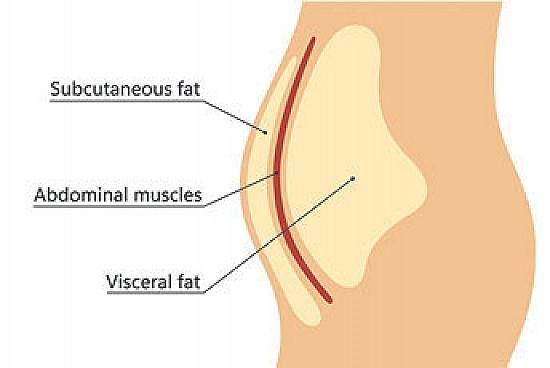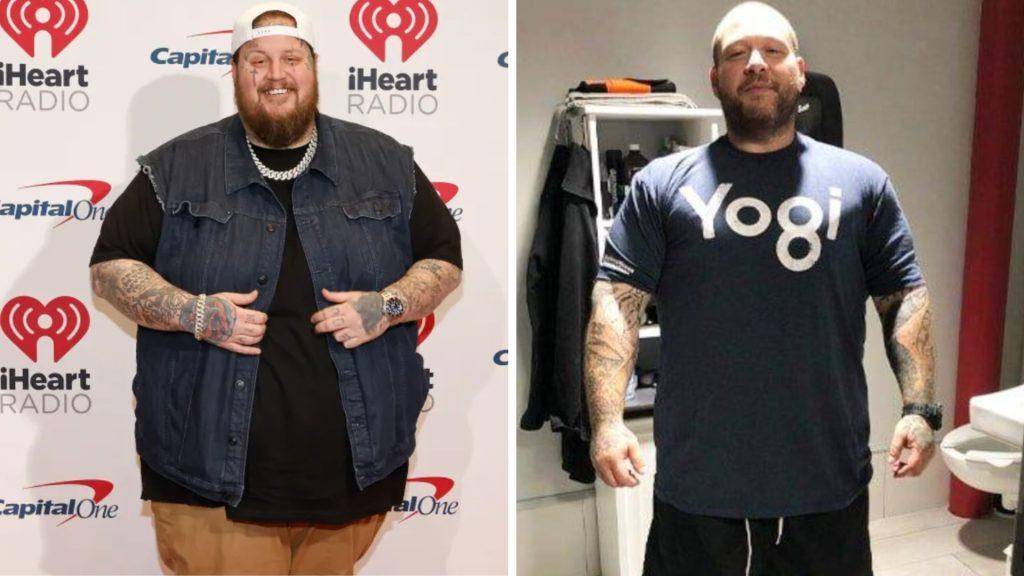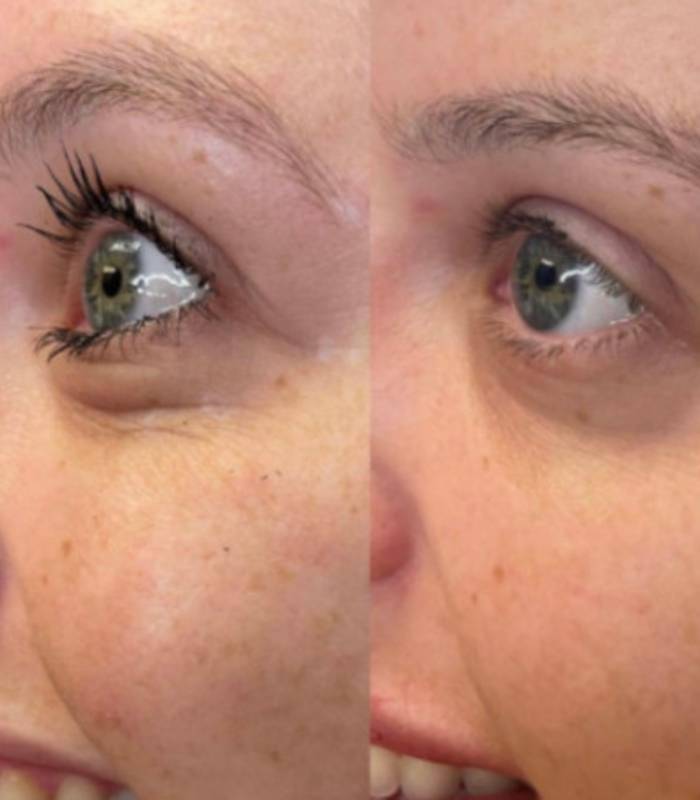In a world increasingly obsessed with fitness trends and quick-fix diets, we frequently enough find ourselves grappling with the complex relationship between body image and health. For many, the term “jelly roll” serves as a lighthearted descriptor for stubborn belly fat that seems to defy the odds, clinging on despite our best efforts. However, beneath the humor lies a serious pursuit—weight loss and a healthier lifestyle that goes beyond mere aesthetics. In this article, we will dive into the multifaceted journey of jelly roll weight loss, exploring effective strategies, scientific insights, and personal testimonies that highlight the holistic approach to transforming one’s physique and fostering self-acceptance. Join us as we roll through the often bumpy road of weight management, uncovering practical tips and motivators that can help anyone seeking to shed their jelly roll and embrace a more vibrant, active life.
Table of Contents
- Understanding Jelly roll Weight Loss and Its Impact
- The Science Behind Subcutaneous Fat and Weight Management
- Identifying Common Myths About Jelly Roll Fat
- effective Exercises for Targeting Jelly Roll Areas
- Nutrition Strategies to Support Jelly Roll Reduction
- Incorporating Mindfulness in Your Weight Loss Journey
- Setting Realistic Goals for jelly Roll Weight Loss
- Success Stories to Inspire Your Transformation
- Maintaining Your Results: Tips for Long-Term Success
- When to Seek Professional Guidance on Weight Loss
- Q&A
- The Conclusion

Understanding Jelly Roll Weight Loss and Its Impact
The term “jelly roll” often refers to those stubborn pockets of fat that rest around the abdomen and thighs, reminiscent of the wobbly texture of a jelly or the rounded shape of a classic dessert. Addressing these areas might seem daunting, but understanding the underlying factors can pave the way for effective weight loss strategies. Lifestyle changes, nutrition, and exercise play crucial roles in achieving and maintaining a healthy body shape.
In many cases, losing weight from these specific areas requires a complete approach. one of the most effective strategies is the incorporation of targeted exercises that engage core muscles while promoting overall fat loss. Some recommended exercises include:
- Planks
- Russian twists
- Leg lifts
- Bicycle crunches
Dietary adjustments are equally important in the journey towards shedding those jelly rolls. Favoring whole foods over processed options can catalyze important changes in body composition. A balanced intake of lean proteins, healthy fats, and fiber-rich carbohydrates can help curb cravings and boost metabolism. Consider incorporating more of the following into your meals:
- Leafy greens
- Avocados
- Quinoa
- Salmon
The psychological aspect of weight loss should not be overlooked either. Establishing realistic goals and recognizing small victories can enhance motivation and discourage discouragement. Keeping a journal or using a fitness app can help track progress and provide insight into accomplished habits versus areas needing enhancement.
To illustrate the potential impact of different strategies on weight loss,here’s a simplified table highlighting various influences:
| Strategy | Impact Level (1-5) | notes |
|---|---|---|
| Targeted Exercise | 4 | Strengthens core and reduces fat |
| Nutrition Changes | 5 | Vital for overall weight loss |
| Hydration | 3 | Aids metabolism and reduces cravings |
| Mindful Eating | 4 | Encourages better food choices |
Ultimately,navigating the path to weight loss is a personal journey,deeply influenced by individual body types,metabolism,and lifestyle choices. By embracing a holistic approach, focusing on consistent exercise, balanced nutrition, and a supportive mindset, losing those jelly rolls can be a more attainable goal than ever before.

The Science Behind Subcutaneous Fat and Weight Management
Subcutaneous fat,frequently enough referred to as the fat found just beneath the skin,plays a complex role in the body’s overall health and weight management. Unlike visceral fat, which surrounds the organs and poses a greater health risk, subcutaneous fat is more superficial and often found in areas that many people are keen to target during weight loss efforts. Understanding how this type of fat accumulates can provide key insights into effective weight management strategies.
One of the primary factors influencing the accumulation of subcutaneous fat is caloric surplus. When more calories are consumed than the body can burn, the excess energy is stored as fat. The body’s natural response to an overstimulated diet is to create a reserve for energy needs. This process can be influenced by:
- dietary Choices: high-sugar or high-fat diets are often linked to increased fat deposits.
- Lifestyle: Sedentary lifestyles lead to less caloric expenditure and may encourage fat storage.
- Hormonal Factors: Hormones such as insulin and cortisol can affect how and where fat is stored in the body.
Aside from caloric intake, regular physical activity is another essential component in managing subcutaneous fat levels. Engaging in both cardiovascular exercise and strength training can help burn calories and promote muscle growth, which in turn can enhance the body’s metabolism. This results in a more efficient fat-burning process. Incorporating diverse activities such as:
- High-Intensity Interval Training (HIIT): Effective for burning calories in shorter amounts of time.
- Resistance Training: Builds muscle,which helps to burn more calories at rest.
- Consistent Cardio: Regular aerobic activities maintain a calorie deficit.
Another engaging aspect of subcutaneous fat is its correlation with overall health. While a certain amount of body fat is functionally necessary for energy storage and insulation,excessive levels can lead to health problems such as increased risks of heart disease and diabetes. A well-balanced approach to weight management often necessitates a focus on not just fat reduction but also on:
| Key Focus Areas | benefits |
|---|---|
| Balanced Nutrition | Supports overall health and reduces fat accumulation. |
| Stress Reduction | Lowers cortisol levels, which can influence fat storage. |
| Sleep Quality | Improves recovery and hormonal balance relevant to fat metabolism. |
Ultimately, managing subcutaneous fat and promoting a healthier body requires an understanding of both physiological processes and lifestyle choices.It is essential to approach weight loss holistically, focusing on combining proper nutrition, regular exercise, and wellness practices. Implementing these factors in a sustainable manner can lead to long-term results, allowing for a balanced relationship with one’s body and an effective means of achieving individual goals.

Identifying Common Myths About jelly Roll Fat
When discussing weight loss and body composition, misconceptions often cloud the conversation, especially regarding jelly roll fat, a common term used to describe excess body fat around the abdomen and hips. Many believe that spot reduction is possible, suggesting a targeted approach to eliminate this fat, but the reality is that fat loss occurs uniformly across the body. This notion is a crucial first myth to dispel, as focusing on specific areas can lead to disappointment and frustration.
Another prevalent myth is the relationship between diet alone and jelly roll fat.Many think that simply cutting calories will lead to the desired weight loss. While a caloric deficit is essential, the quality of the diet plays a significant role. Nutrient-dense foods provide the necessary vitamins and minerals that support overall health and promote fat loss.Additionally, a well-rounded diet that includes a balance of carbohydrates, proteins, and healthy fats can aid in maintaining metabolism during the weight loss journey.
Exercise is not necessary for reducing jelly roll fat, which is a commonly held belief. Incorporating physical activity into your routine not only burns calories but also builds muscle, which can increase basal metabolic rate. Strength training, cardio, and flexibility exercises contribute to a balanced fitness regimen. When people overlook the importance of exercise, they may struggle to achieve sustainable weight loss and may encounter diminishing returns from their dietary changes alone.
Another myth is that some people are genetically predisposed to jelly roll fat, and thus, there’s nothing they can do about it. While genetics can influence body shape and fat distribution, lifestyle choices play a considerable role. Factors like diet,physical activity,and stress levels can significantly impact how fat is stored and managed in the body. Embracing lifestyle changes can definitely help many individuals take control of their health, irrespective of their genetic background.
the belief that fat loss equates to “going hungry” is misleading. Many assume that weight loss involves severe restrictions,which can lead to binge eating and negative associations with food. A balanced approach that emphasizes moderation and mindful eating can lead to effective and lasting results. Education about portion sizes, food types, and eating habits fosters a healthier relationship with food while catering to the desire for a healthier body composition.

Effective Exercises for Targeting Jelly Roll Areas
Targeting those stubborn jelly roll areas requires a mix of dedicated exercises aimed at strengthening the core and toning the obliques. Incorporating a variety of movements into your routine can definitely help you shape and sculpt your waistline while also boosting your overall fitness. Here are some effective exercises to consider:
- Side plank: Engaging your obliques while stabilizing your body, this exercise can significantly tone the sides of your waist. Hold the position for 30 seconds on each side, gradually increasing the duration.
- Bicycle Crunches: This dynamic movement activates your entire core,including the jelly roll areas. Aim for 15-20 repetitions per set, focusing on slow, controlled movements for maximum engagement.
- Russian Twists: Sit on the floor with your knees bent, lean back slightly, and twist your torso side to side. Incorporate weights for added resistance to this challenging exercise.
- Mountain Climbers: A high-intensity exercise that not only targets your nucleus but also revs up your heart rate, effectively burning calories. Perform for 30-60 seconds while maintaining a steady pace.
- Leg Raises: Lying flat on your back,this exercise focuses on the lower abdominal area. Keep your legs straight and lift them upward, engaging your core while preventing strain on your lower back.
Implementing these exercises into your fitness routine will allow you to not only target the jelly roll region but also enhance your overall strength and endurance. Consistency is key, so it’s vital to set a realistic schedule that includes the above movements. To make your workouts more efficient, consider varying your sets and repetitions based on your fitness level.
| Exercise | Sets | Repetitions |
|---|---|---|
| Side plank | 3 | 30 seconds each side |
| Bicycle Crunches | 3 | 15-20 |
| Russian Twists | 3 | 15-20 |
| Mountain Climbers | 3 | 30-60 seconds |
| Leg Raises | 3 | 12-15 |
Add these effective exercises into your routine three to four times a week, alongside regular cardiovascular activities and a balanced diet, to create a synergistic approach to weight loss. Remember to listen to your body; allow time for recovery, and adjust the intensity as needed to suit your capabilities. Hydration and proper nutrition will also play crucial roles in your progress towards a toned midsection.

Nutrition Strategies to Support Jelly Roll Reduction
Achieving weight loss in areas like the jelly roll requires specific nutrition strategies that prioritize healthy eating habits. Balancing macronutrients is critical; aim for a mix of carbohydrates, proteins, and fats in every meal. This approach helps minimize fat storage while promoting muscle repair and energy levels. Consider switching to whole grains, lean proteins, and healthy fats such as avocados and nuts. These foods not only nourish your body but also keep you feeling fuller longer.
Incorporating more fruits and vegetables into your diet can significantly aid in fat reduction around the abdomen. These foods are low in calories but high in fiber, which improves digestion and promotes satiety. Aim to fill half your plate with colorful vegetables and fruits at each meal. Specifically, leafy greens, berries, and citrus fruits can be remarkable choices for their nutrient density and low-calorie count.
| food Group | Benefits |
|---|---|
| Leafy Greens | Low in calories; high in nutrients and fiber |
| Berries | Rich in antioxidants; supports metabolism |
| Citrus fruits | Boosts hydration; aids digestion |
Another effective method to reduce jelly roll fat is to monitor portion sizes. Even healthy foods can contribute to weight gain if consumed in excess. Use smaller plates to encourage smaller portions, and pay attention to hunger cues, eating only until you are satisfied—not stuffed.Additionally, keeping a food diary can enhance your awareness of your eating habits, making it easier to identify areas for improvement.
Lastly, don’t underestimate the importance of hydration in your weight loss journey. Staying adequately hydrated can suppress appetite and improve metabolism.Aim for at least eight glasses of water a day, and consider replacing sugary beverages with herbal teas or infused water. This small change can drastically decrease calorie intake, making a significant difference over time.

Incorporating Mindfulness in Your Weight Loss Journey
When it comes to transforming your relationship with food and fostering a positive mindset around weight loss, mindfulness can be a game-changer. Practicing mindfulness encourages you to focus on the present moment, helping you develop a deeper awareness of your body’s natural hunger signals and cravings. By tuning in to these signals, you can make more informed choices that align with your health goals, rather than simply reacting to external temptations.
Incorporating mindfulness into your routine may involve simple practices such as:
- Meditative Eating: Taking time to savor your meals, reducing distractions, and appreciating the flavors and textures can enhance your eating experience.
- Journaling: Keeping a food journal that encourages reflection on your feelings,thoughts,and experiences surrounding eating can reveal patterns and help you understand emotional triggers.
- Breath Awareness: Taking a few moments to focus on your breath before meals can set a calm tone, promoting a more conscious approach to eating.
Creating a mindful surroundings at home can also reinforce your commitment to healthier habits. Try to establish designated areas for meal times, free from electronic devices and distractions. This means creating a serene setting that promotes relaxation and attention. Consider using elements that appeal to your senses, such as:
- Aromatherapy: Using essential oils or candles with calming scents.
- Ambient Lighting: Soft, warm lights that create a cozy atmosphere.
- Soothing Sounds: Playing gentle music or nature sounds to enhance tranquility.
Additionally, engaging in regular mindfulness exercises such as yoga or meditation can significantly complement your weight loss journey. These practices not only help in reducing stress but also improve your overall mental well-being, allowing you to stay focused on your goals. By nurturing a mindful mindset, you start recognizing emotional eating patterns and can find healthier coping mechanisms.
it’s essential to cultivate a sense of compassion towards yourself throughout this journey. Weight loss is not a linear process, and there will be ups and downs. Acknowledging your progress, regardless of how small, fosters motivation and reinforces positive behavior. Celebrate small victories, and allow yourself moments of indulgence without guilt. Remember, mindfulness is about enjoying the journey, not just the destination.

Setting Realistic Goals for Jelly Roll Weight Loss
Setting achievable targets is crucial for anyone looking to shed those stubborn jelly rolls. instead of plunging into an aggressive fitness regimen or crash diet,consider breaking down your weight loss journey into smaller,manageable milestones. This will not only keep your motivation high but also enable you to track your progress effectively.
To begin, evaluate your current lifestyle and challenges. assess your habits concerning diet,exercise,and overall wellness. This self-reflection allows you to pinpoint the specific areas you need to work on. Identify habits you can modify or substitute, such as replacing sugary snacks with healthier options or integrating short exercise sessions into your busy day.
Next, establish specific and clear goals. Instead of a vague target like “I want to loose weight,” aim for something like, “I want to lose 1-2 pounds each week for the next month.” This makes your objectives quantifiable and gives you a timeline to adhere to.Here’s a simple goal-setting table to illustrate this approach:
| Goal | Deadline | Action Steps |
|---|---|---|
| Lose 2 pounds | End of Week 1 | – Exercise 30 mins 5x/week – Track calorie intake |
| Incorporate 3 new recipes | end of Week 2 | – Research healthy recipes – meal prep each Sunday |
| Increase water intake | End of Month 1 | - Drink 8 cups daily – Carry a water bottle |
Your approach should prioritize sustainable habits over extreme measures. Consider incorporating a balanced diet and regular physical activity that you genuinely enjoy. Whether it’s brisk walking, yoga, or dancing, find a way to make exercise a fun part of your daily routine. Pair this with a nutrition plan that includes a variety of whole foods to nourish your body, rather than depriving yourself of meals.
Lastly, celebrate your progress, no matter how small. Each step taken towards your goal deserves recognition. Acknowledge your achievements by treating yourself to non-food rewards, such as a new workout outfit or a leisurely day out. This positive reinforcement not only makes your journey enjoyable but also helps to build the resilience needed to reach your ultimate weight loss goal.

Success Stories to Inspire Your Transformation

Maintaining Your Results: Tips for Long-Term Success
Achieving weight loss goals is a remarkable journey, but maintaining those results requires dedication and smart strategies. To ensure those hard-earned outcomes stick around, make lifestyle changes that you can enjoy and sustain over the long haul. Start by incorporating regular physical activity into your routine. This doesn’t mean hitting the gym every day; rather, find activities that you love, whether it’s dancing, hiking, or gardening. Enjoying exercise makes it easier to stick with it.
Another effective strategy is to keep food choices balanced and colorful. Focus on incorporating a variety of fruits and vegetables into your daily meals, as they are low in calories but high in nutrients. Try to build your plate with whole foods like:
- Fresh fruits and vegetables
- Whole grains
- Lean protein sources like chicken, fish, and legumes
being mindful of your portion sizes can also play a significant role in maintaining your weight. Consider using smaller plates to control your servings, and aim to recognize hunger cues. This mindfulness can help prevent overeating and keep you aligned with your goals. You may find it beneficial to maintain a food journal, allowing you to track what you eat, your feelings about food, and any patterns you notice in your eating behaviors.
Staying hydrated is crucial in maintaining weight loss. Ensure you’re drinking plenty of water throughout the day, as hydration can often be confused with hunger. It’s also helpful to minimize the consumption of high-calorie beverages like sodas and sugary coffee drinks, which can add unnecessary calories to your diet. Consider keeping a water bottle handy and infusing it with fruits or herbs to make hydration more enjoyable.
Lastly, the social aspect of weight maintenance can’t be overlooked. Surround yourself with a supportive community, whether that’s through friends who share your goals, fitness classes, or online forums.Engaging with others not only reinforces your commitment but also provides motivation during challenging moments.Celebrate your successes, big or small, and remember that maintaining your weight loss is a continuous journey filled with learning and growth.

When to Seek Professional Guidance on Weight Loss
Embarking on a weight loss journey can be both exciting and overwhelming, especially if you’re aiming to target specific areas like the jelly roll. Knowing when to turn to professional guidance can make all the difference in your path to effective and sustainable results.
Consider seeking professional help if you find yourself struggling to identify effective strategies that suit your lifestyle and needs. A nutritionist or personal trainer can provide a tailored plan that considers your unique circumstances. Their expertise may help you navigate the confusion of diets,workout routines,and lifestyle changes that are often conflicting in the information available online.
You should also think about professional assistance if there are underlying health issues that coudl affect your weight loss journey. As an example, hormonal imbalances or metabolic disorders can complicate losing weight from specific areas. Consulting with a healthcare provider can ensure you’re not only addressing your weight loss goals but also taking care of your overall health concurrently.
Additionally, if you notice that your weight loss efforts are resulting in emotional distress or unhealthy behaviors, it may be time to enlist the help of a therapist or counselor. Weight loss can be tied to emotional eating or body image issues, and receiving support can foster a healthier mindset throughout your transformation.
Lastly,establishing realistic and achievable goals is crucial. If you’re feeling lost or discouraged by your progress, a professional can definitely help set practical milestones. They can assist in calibrating your expectations based on your body type, lifestyle, and personal goals, ensuring that your attempts are not just effective but also enjoyable. Understanding that weight loss is a journey rather than a sprint can reshape how you view your progress.
Q&A
Q&A: Exploring Jelly Roll Weight Loss
Q1: What exactly is “jelly roll” in the context of weight loss?
A1: The term “jelly roll” typically refers to the soft, flabby fat that can accumulate around the midsection, frequently enough giving the appearance of a rolling or wobbly mass when one sits or moves. In the weight loss community, it has become a colloquial way to describe this specific area of body fat that many individuals seek to reduce.
Q2: Is it possible to target jelly roll fat specifically?
A2: While many aspire to target specific areas for fat loss, known as “spot reduction,” research suggests that weight loss is generally a more systematic process.Reducing overall body fat through a combination of healthy eating,cardiovascular exercise,and strength training can help diminish the appearance of jelly roll fat over time.
Q3: What are some effective strategies for reducing jelly roll fat?
A3: A holistic approach often yields the best results. Here are a few strategies:
- Balanced Diet: Focus on whole foods,such as fruits,vegetables,lean proteins,and whole grains,while reducing processed foods and sugars.
- Regular Exercise: incorporate both aerobic exercises (like jogging, cycling, or swimming) and strength training (like weight lifting or resistance exercises) to boost metabolism and build muscle.
- Core Workouts: Engage in exercises that specifically target the core, like planks, bicycle crunches, and leg raises, to strengthen the underlying muscles in the abdominal area.
Q4: How long does it typically take to notice a reduction in jelly roll fat?
A4: The timeline varies greatly depending on individual factors such as starting weight, age, metabolism, and consistency with diet and exercise. With a dedicated approach, many people might start to notice changes in a few weeks, but substantial results frequently enough take several months of sustained effort.
Q5: Are there any quick fixes or gimmicks for losing jelly roll fat?
A5: While the allure of quick fixes might potentially be strong, most fad diets or quick solutions are not recommended. Such methods often lead to temporary results at best and could harm your health. The most sustainable way to lose jelly roll fat is through lifestyle changes that you can maintain in the long run.Q6: How does mental health play a role in weight loss, specifically for jelly roll fat?
A6: Mental health is a significant component of weight loss success. Stress, anxiety, and negative body image can lead to overeating or discouragement in maintaining a healthy lifestyle. Cultivating a positive mindset, practicing mindfulness, and seeking support can enhance motivation and lead to more effective weight loss efforts.
Q7: Can I accept my jelly roll instead of trying to lose it?
A7: Absolutely! Body positivity promotes acceptance of all body shapes and sizes. If your jelly roll doesn’t negatively impact your health or self-esteem, embracing it can be empowering.Ultimately, weight loss should be about overall health and well-being, not just aesthetics.
Q8: Where can I find support in my journey to reduce jelly roll fat?
A8: Many resources are available, including fitness classes, wellness groups, in-person or online personal trainers, nutritionists, and online forums. Surrounding yourself with a supportive community can greatly enhance your journey toward a healthier lifestyle.
Conclusion: weight loss, including the quest to reduce jelly roll fat, is a multifaceted journey that intertwines physical, mental, and emotional well-being. By approaching it with a balanced mindset and sustainable habits, you can work toward your goals without compromising your overall health.
The Conclusion
the journey of jelly roll weight loss is not just about shedding those extra pounds; it’s about embracing a healthier lifestyle that nurtures both body and mind.As we navigate the various strategies—from balanced nutrition and exercise to mindfulness practices—it’s essential to find what resonates best with our individual needs. Remember, progress is not only measured in numbers but also in the confidence gained and the positive changes embraced. So, whether you’re just starting your journey or seeking to sustain your hard-earned results, stay committed, stay inspired, and allow each step to guide you toward a fulfilling and vibrant life. Every small victory adds up; let this be the beginning of a transformative chapter in your wellness story.


